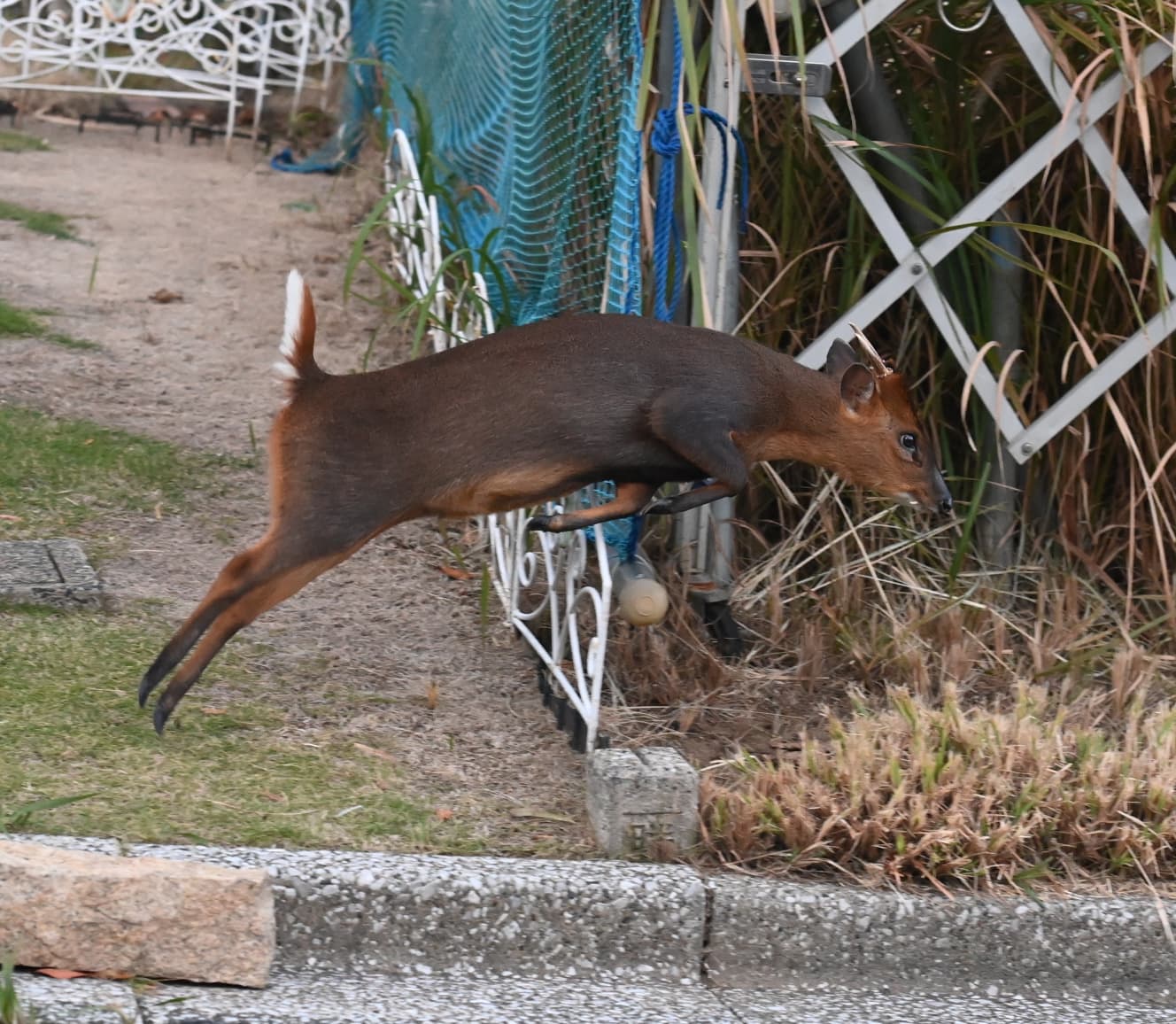Screaming children’s cries at night… Report! 70,000 mass-produced kyong swim to Tokyo “Shocking breeding site” photo
The kyong breeds in Chiba Prefecture, but recently it has crossed the prefectural border into Ibaraki Prefecture. It is no longer a problem within Chiba Prefecture. If this trend continues, it will only be a matter of time before it appears in Tokyo.
The kyon, an invasive alien species of the deer family, is proliferating in Chiba Prefecture. According to the prefectural government, the number of the species in the prefecture has been increasing every year, As of 2010 According to the prefectural government, the number of the species in the prefecture has been increasing every year, reaching 70,000 as of 2010 1,500 The number of animals in the prefecture has been increasing every year, and as of 2010, there were 71,500. Body size 1 m Weight 10 kg This herbivore looks like a smaller version of the Japanese deer. Originating from China and Taiwan, it was not originally found in Japan.
Takehito Ichihara, deputy director of Chiba Prefecture’s Nature Conservation Division, explains.
In the case of Chiba, In the case of Chiba, the Katsuura City sightseeing area was closed in 2001. In the case of Chiba, the herbivore was kept at a tourist facility in Katsuura City, which closed in 2001, and escaped and became wild. The animals had been kept in a somewhat free-range environment, so some of them had escaped before the park was closed. They become pregnant from the age of 7 months and their fertility is strong, so their numbers increase rapidly. They settle south of Ichihara City and are particularly abundant in the mountain forests of Kimitsu, Kamogawa, and Otaki Towns.”
The increase in its population is also causing more damage to residential areas. Some residents complain that the birds eat the flowers planted in their flowerbeds and rice in their rice paddies, and that they disturb their sleep at night by making frighteningly loud noises that sound like the screams of a child. The prefecture is working to eradicate them. In 2010 In 2010 8864 In 2010, the prefectural government captured 8,864 animals, but there is no sign of a decrease in the number of animals.
In the middle of the night, “Gyeong!”
This kyong has recently spread to the northwestern part of the prefecture near Tokyo. Yukio Ogawa, who runs a farm in Kashiwa City, said.
I have seen them four times so far. The first time was about six years ago. I was working in a mountain forest when I saw a small animal running up a cliff. In the middle of the night, I heard a distinctive cry of ‘Gyoon! and I realized it was a kyong. It once came out in front of our car. I felt that they were gradually approaching the urban area of Kashiwa, as if they were migrating through the mountains and rivers.
I began to see wild animals such as kyong and wild boars after they caused great damage to the prefecture in ’19 Typhoon Typhoon No. 15 in ’19, which caused extensive damage to the prefecture. The first time I saw wild animals such as kyong and wild boar was after Typhoon No. 15 in ’19, which caused extensive damage to the prefecture. In terms of damage to crops, the wild boars are more significant, but I am concerned that the kyong may eat rare plants.”
It is not only in Chiba. The species has already been spotted multiple times in Ibaraki. Yusuke Goto, deputy chief curator at the Ibaraki Prefectural Museum of Nature, explains.
“In Ibaraki The number of confirmed sightings in Ibaraki from 2005 to the present is only three. There have been three confirmed sightings in Ibaraki Prefecture from 2005 to the present. There have been more sightings and calls. The most recent one is about 50 km north of Kashiwa. km north of Kashiwa. Chikusei City, about 50 km north of Kashiwa, in September this year. It probably came across the Tone River from Chiba.
So far, all confirmed are males, but there is a possibility of breeding if a female arrives. Since the mountains to the north of Ibaraki continue to Tochigi and Fukushima, there is a risk that they could spread throughout eastern Japan. We need to contain it in Ibaraki and are gathering information.”
What’s even more interesting is that Kyung is in Tokyo 23 wards in Tokyo. Cross the Edogawa River from Chiba and you are in Tokyo’s Katsushika Ward. From Ibaraki, he would cross the Tone and Edo Rivers, and if he followed the rivers southward, he would be in the Tokyo metropolitan area. One often hears rumors that Kyon is unlikely to cross the river because he cannot swim. However, there have actually been sightings of Kyung swimming.
An employee of “Malibu Point,” a marine sports service provider in Katsuura City An employee of Malibu Point, which offers marine sports services in Katsuura City, said, “We are not aggressive, but we are not afraid to take action if necessary.
He is not very active, but if he has to, he will swim. In Katsuura, you can sometimes see kyong swimming after falling off cliffs or being chased by animals and jumping into the ocean. Also this fall, off the Pacific Ocean 350m swimming in the Pacific Ocean, and we guided it toward shore and rescued it.”
If you can swim, moving to Tokyo becomes a reality. per year. 300 Yusuke Harada, president of Hunters’ Studio (Kimitsu City), who is familiar with the ecology of kyong, including the fact that more than 300 kyong are captured annually and sold as gibier meat, points to the possibility of a migration to Tokyo.
The kyong swim like a dog paddle. Adventurous young males migrate in search of territory. If they are chased by dogs or other animals while traveling along the Edogawa River in Chiba, it would not be surprising if they jumped into the river in surprise and crossed straight to the riverbank on the Tokyo side. The riverbanks, where there are many grassy areas and food is easy to find, are a good habitat for animals. There is a possibility that they will settle in Tokyo from there.
Currently, the only places where kyongs live are said to be Chiba and Izu Oshima Island. However, there are zoos scattered throughout the country that once kept kyongs when animal management was less stringent, and some people have reported hearing their cries in the mountains of those areas. Although the kyong are not responsible for being brought to Japan by humans, they are already becoming a problem throughout the country.
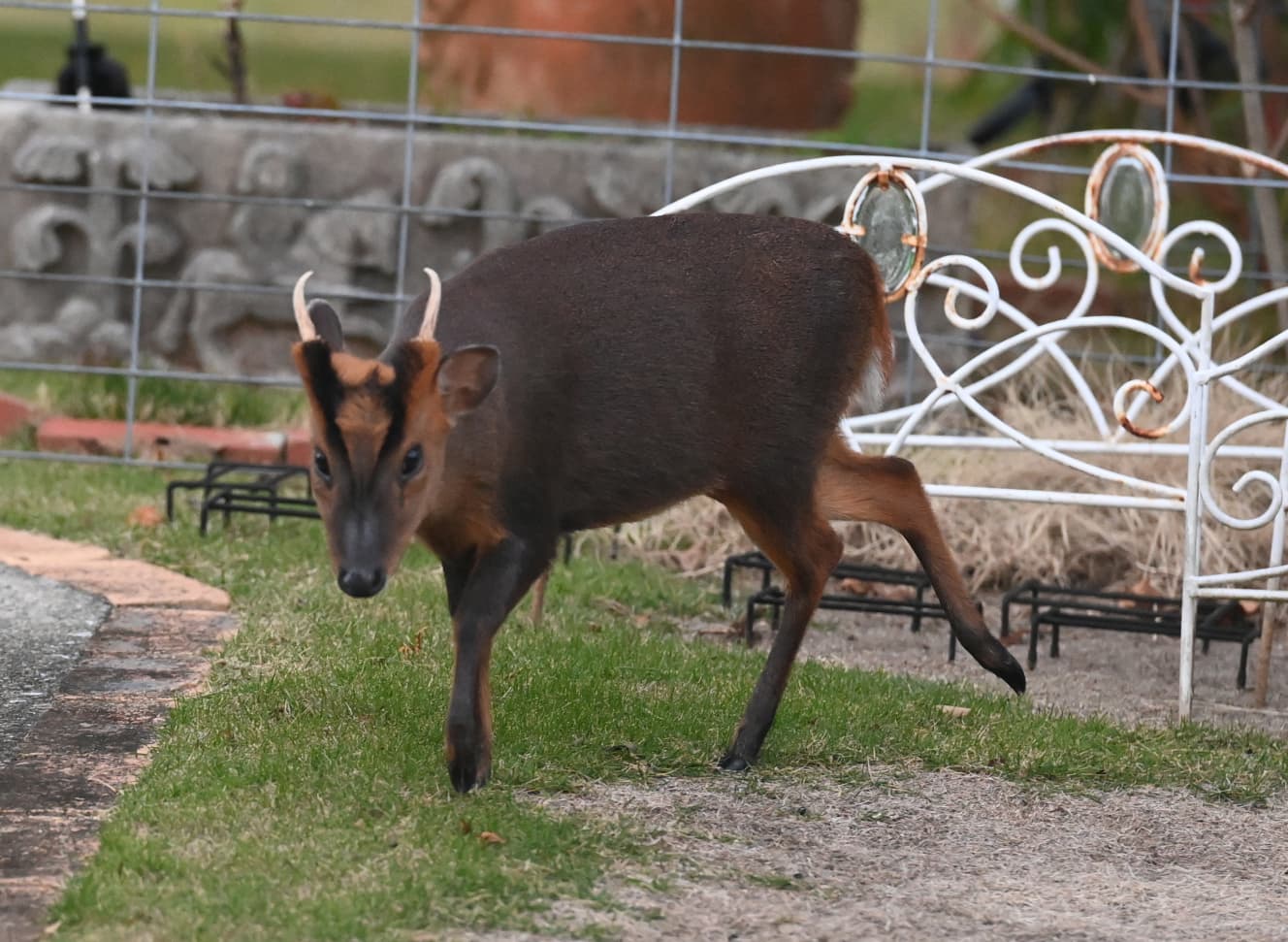
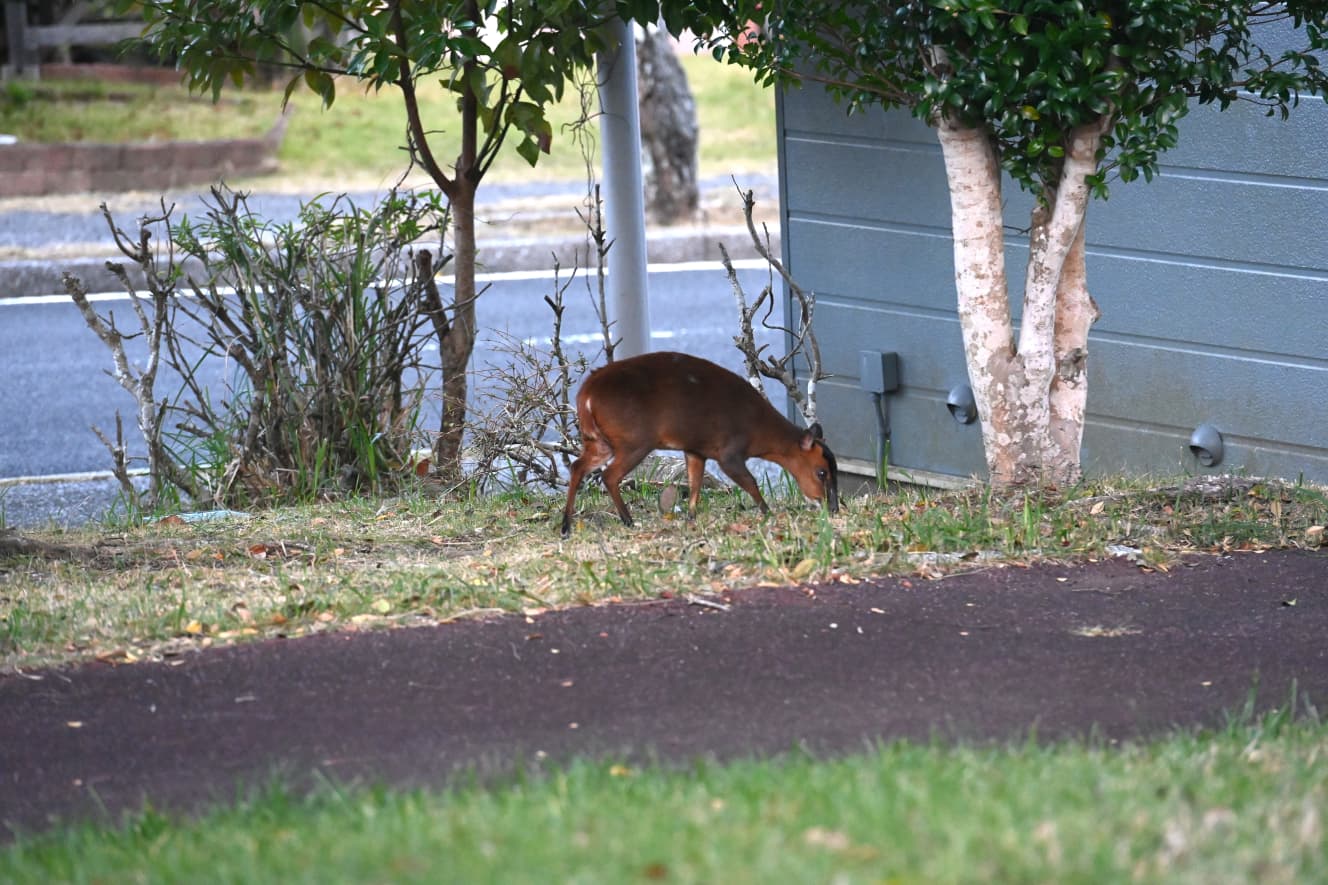
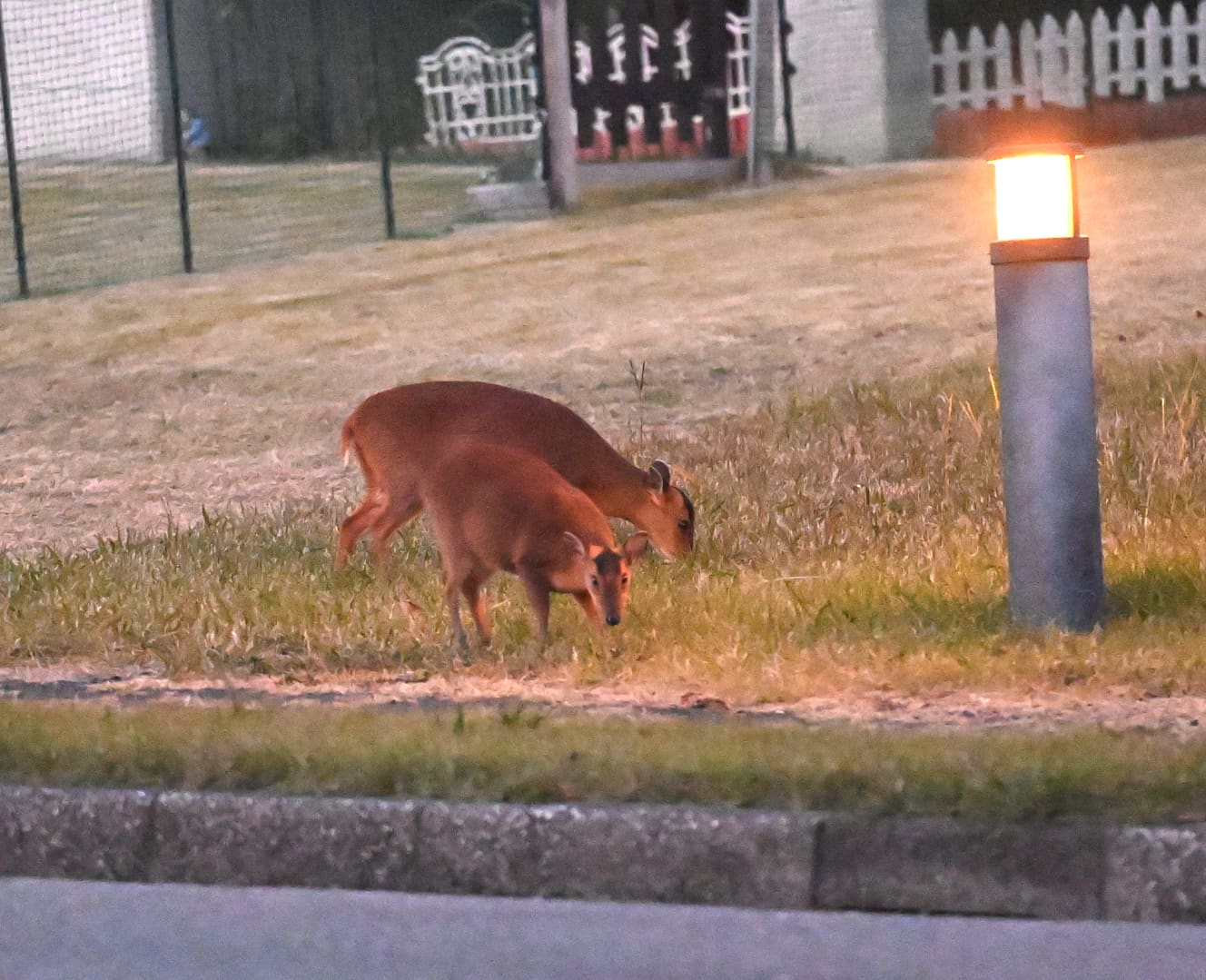
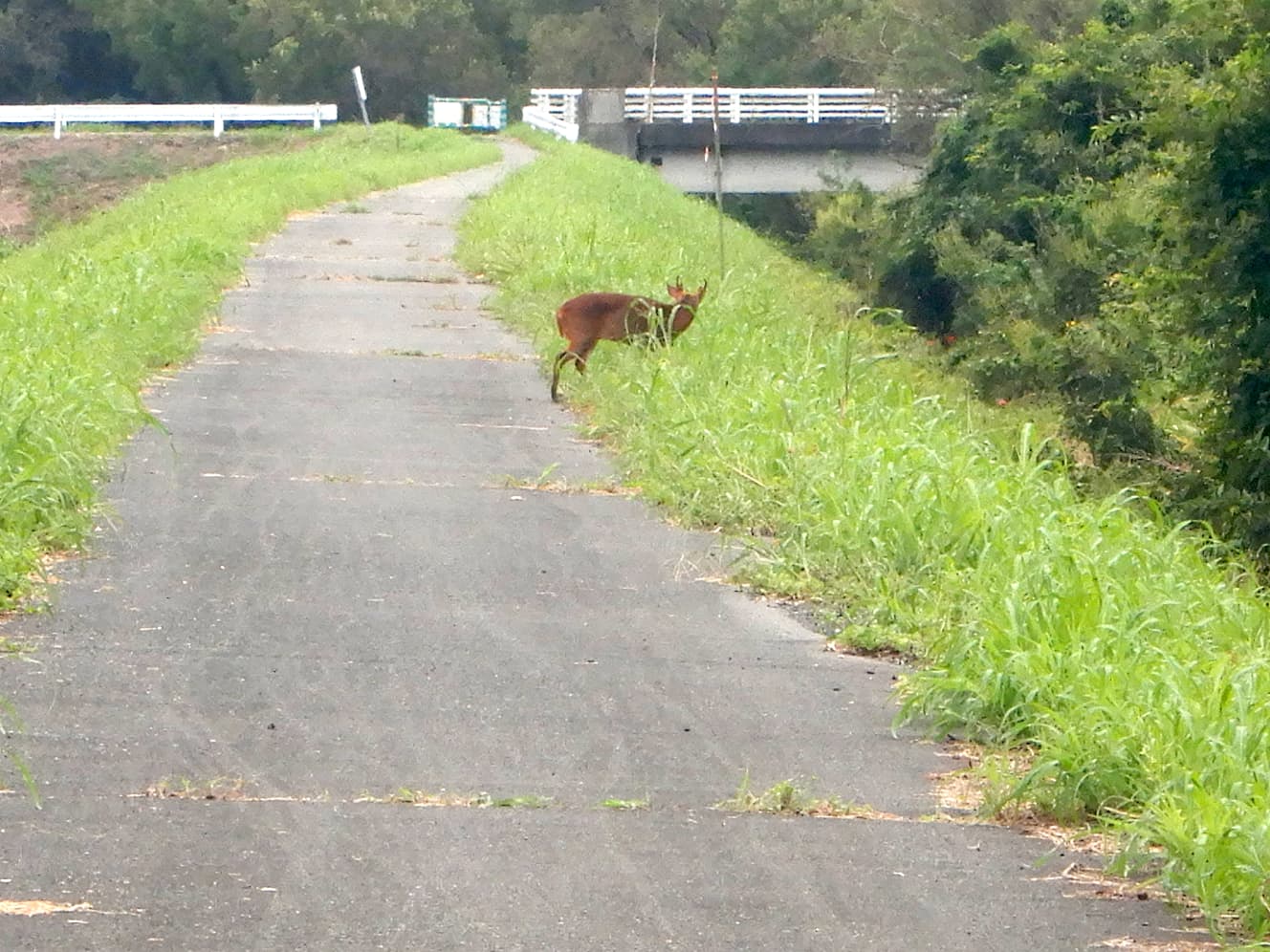

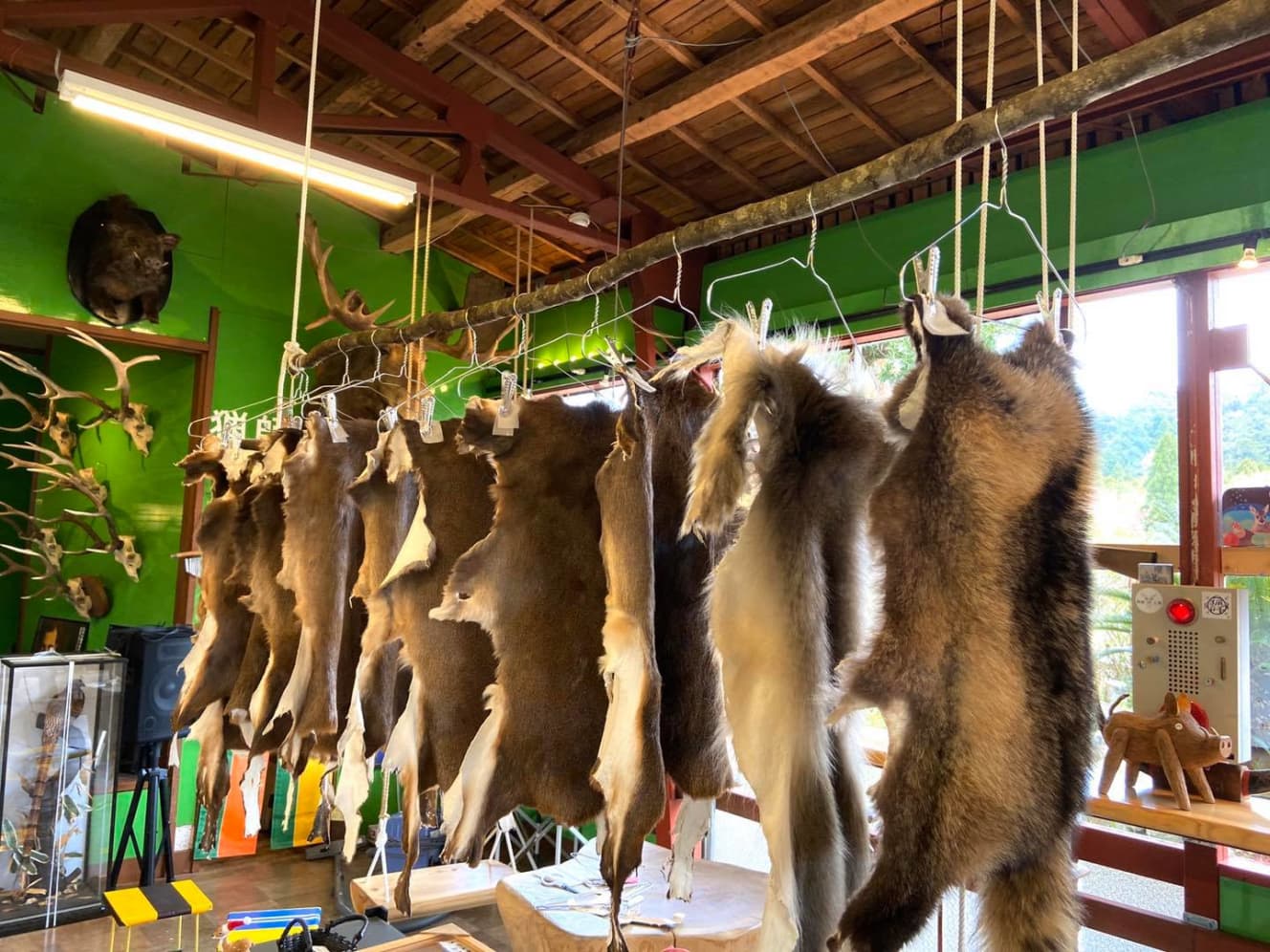
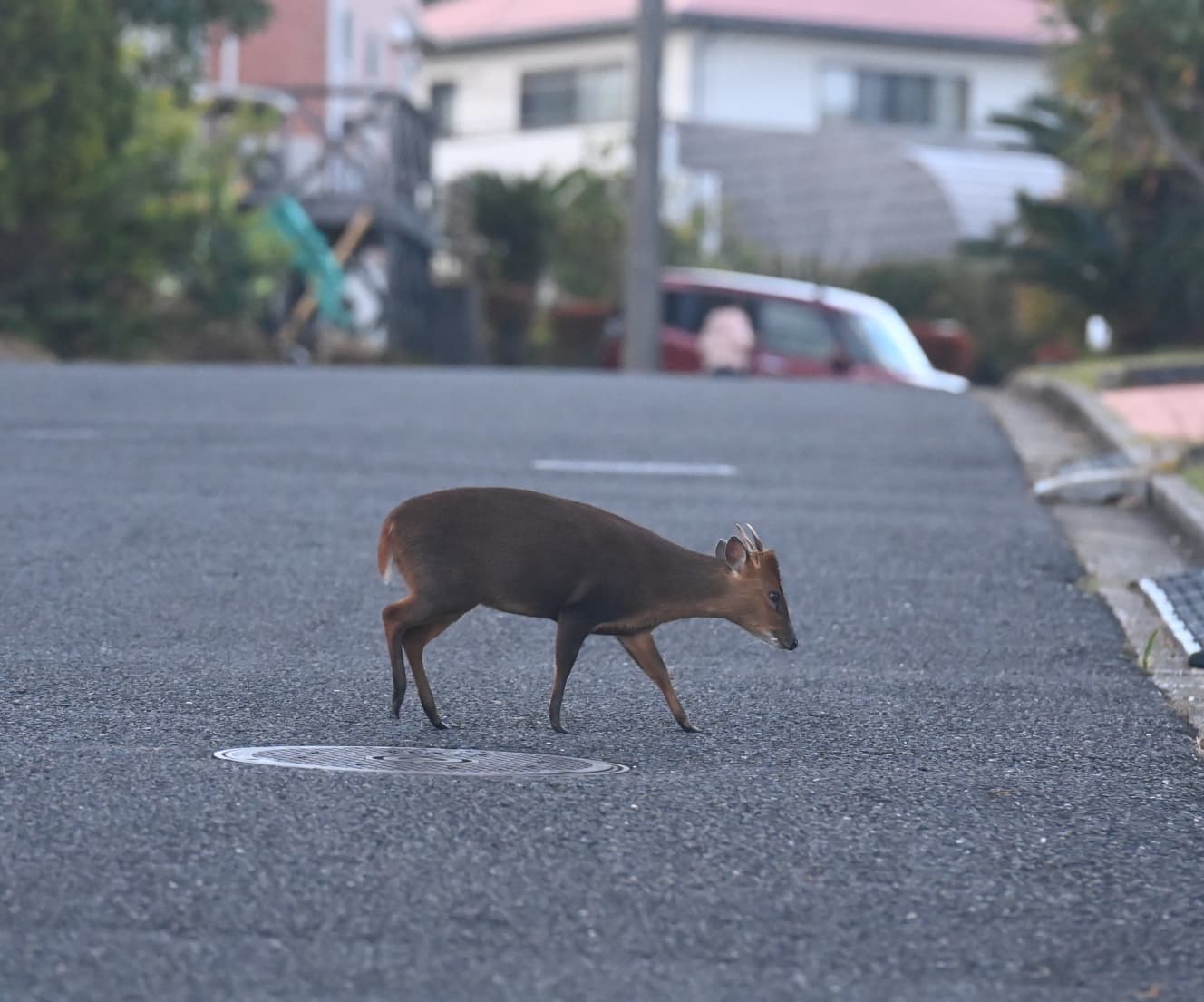
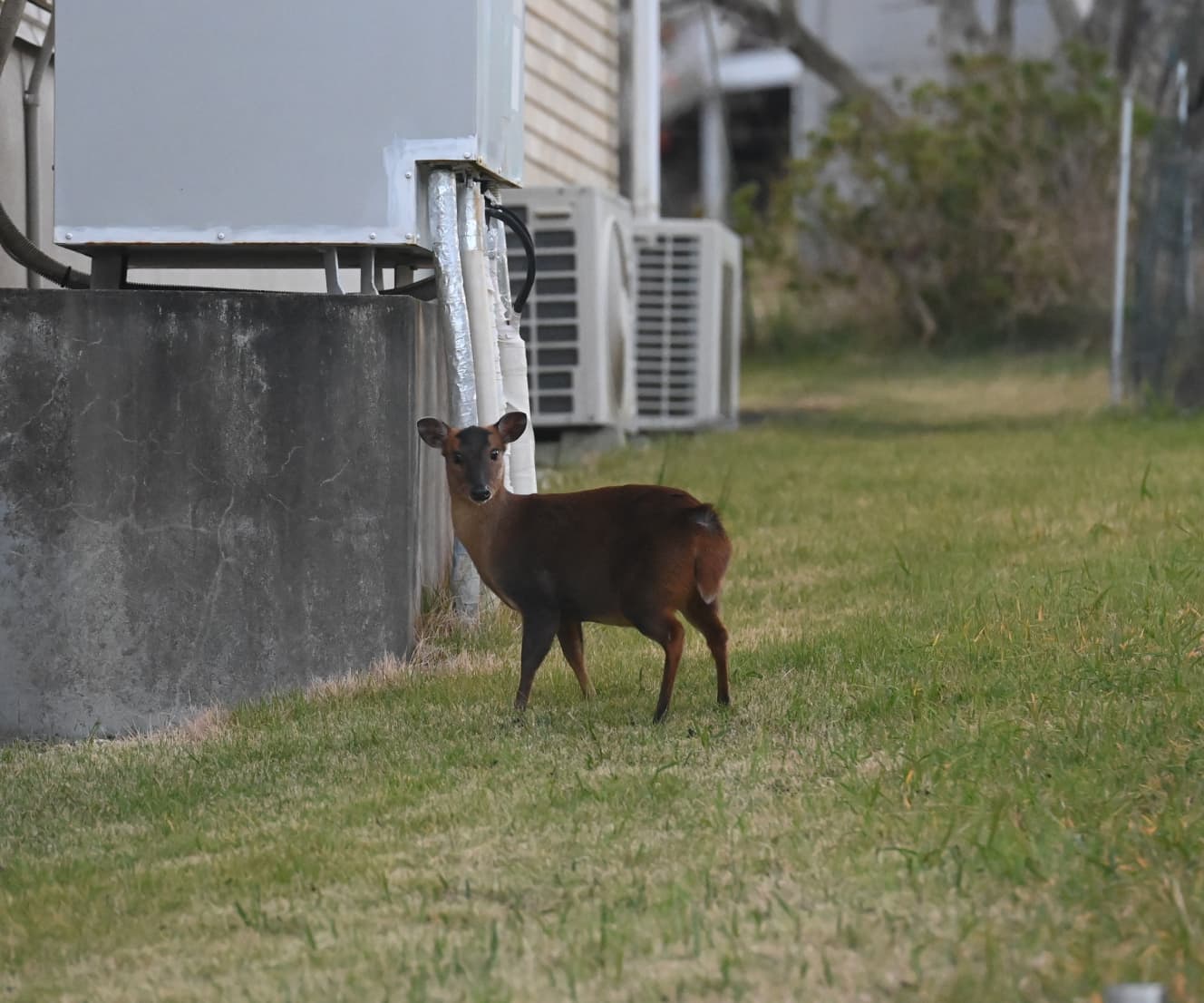
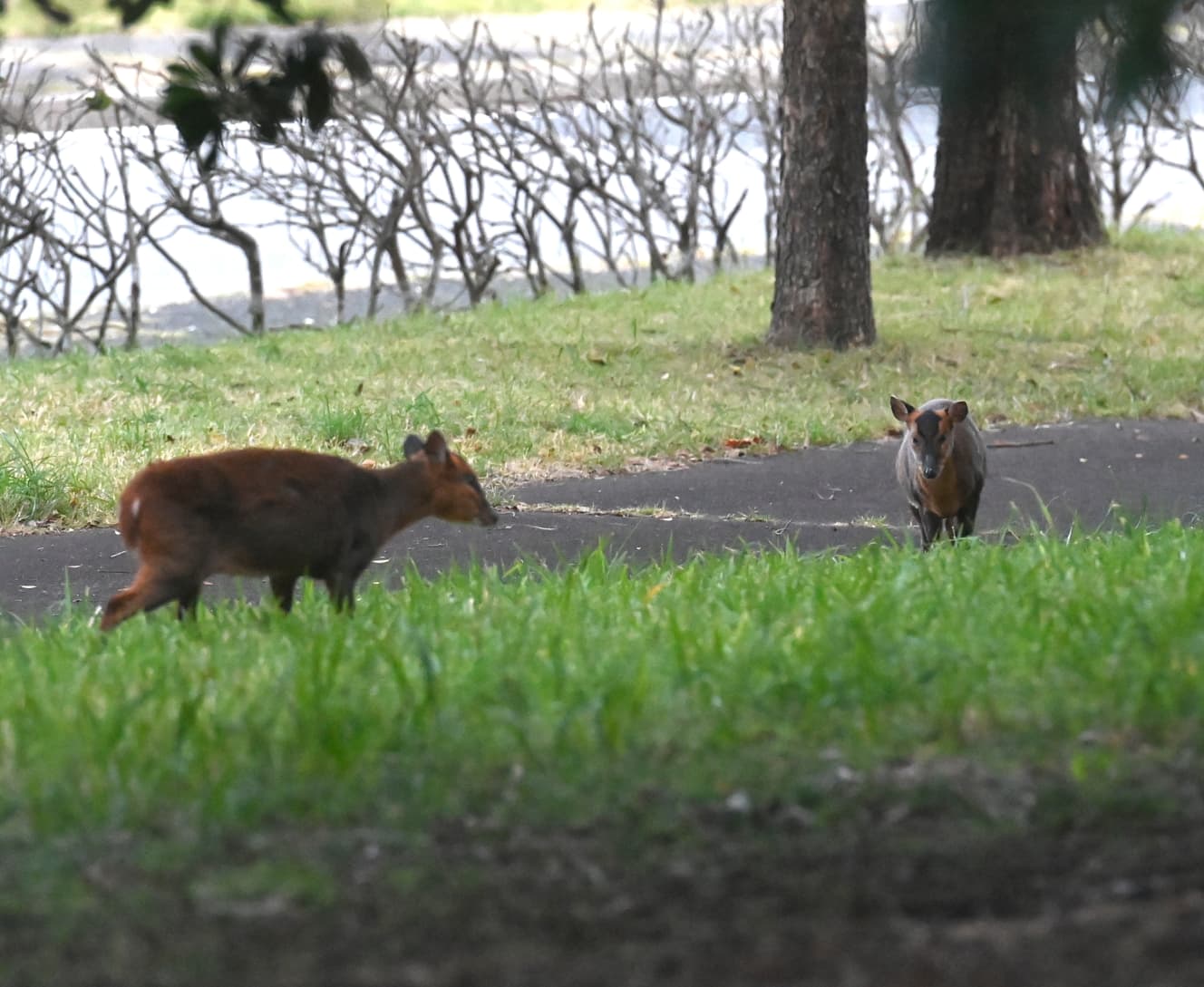
Reporting, writing, and photography: Masayoshi Katayama
Journalist
